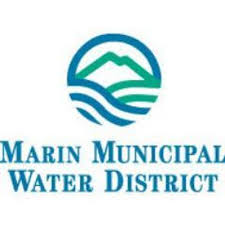- I turn off the tap while brushing my teeth.Water Saved: 300 gallons/month
- I cut my shower time by 1-2 minutes.Water Saved: 700 gallons/month
- I run only full loads of dishes or laundry.Water Saved: 700 gallons/month
I repair any leaky faucets and toilets.Water Saved: 190 gallons/month - I use a broom instead of hose to clean my driveway, decks & patios.Water Saved: 8-18 gallons/month.
- I use pool & spa covers to reduce evaporation.Water Saved: 30 gallons/day.
- I replaced a portion of lawn with drought resistant natives.Water Saved: 33-60 gallons/day/1,000sqft depending on climate.
- I repair any irrigation leaks & broken sprinklers.Water Saved: 20 gallons/day per leak.
- I reduced each irrigation cycle by 1-3 minutes.Water Saved: 15-25 gallons/minute; up to 250 gallons a cycle
Water
Bay Friendly Gardening Workshops

Need inspiration for your garden makeover? Want to learn the “Seven Principles” of Bay Friendly gardening?
Thank you to all the MMWD customers who made our first year (of holding summer classes at Sustainable Fairfax) such a success!!
A big thanks goes out to the Water District’s teachers, Earthsite and our sponsor www.yourgardenshow.com with whose assistance made this summer classes a huge hit!
Visit the Bay Friendly Coalition for future Bay Friendly gardening classes by MMWD in the spring.
7 Principles of Bay-Friendly Landscapes
1. Landscape Locally
recognizes that built landscapes are a part of the larger ecosystem of the San Francisco Bay watershed and that they can contribute to it’s health if designed and maintained using sustainable practices
2. Landscape for Less to the Landfill
means that we should reduce waste by choosing the right plants, avoiding invasive plant species, using recycled and salvaged products in the landscape and by composting, mulching and grasscycling plant debris.
3. Nurture the Soil
soils are living ecosystems and when landscape practices allow the soil food web to thrive it can filter pollution, store water, provide plant nutrients, and help plants resist pests naturally.
4. Conserve Water
means using a holistic approach of creating drought resistant soils with compost and mulch, selecting plants naturally adapted to summer-dry climates, using stormwater, greywater and recycled water in the landscape as much as possible and using efficient irrigation systems that include self-adjusting, weather-based controllers.
5. Conserve Energy
by reducing the need for mowing and shearing, by shading buildings and paved areas, using efficient outdoor lighting, and buying local landscape products.
6. Protect Water and Air Quality
through maximizing permeable surfaces and minimizing stormwater runoff, using integrated pest management, minimizing the use of synthetic pesticides and avoiding overuse of fertilizers, reducing fossil fuel consumption, and planting trees to remove CO2 and absorb air pollutants.
7. Create Wildlife Habitat
recognizes that biodiversity is crucial to the health of natural ecosystems and that by using native plants and increasing the diversity of plant palettes, our built landscape can provide food, water and shelter for birds, butterflies, beneficial insects and other creatures
Water Conservation Ordinance Notice
Marin Municipal Water Distrrict (MMWD) passed a water conservation ordinance which applies to all citizens in the district. Check it out!
April 2010 Reservoir Report

SPRING RAINS CONTINUE TO EXCEED SEASONAL AVERAGES
Rainfall this year continues to exceed the average, with rain for the month of April measuring 8.24 inches at Lake Lagunitas. Rainfall in April 2009 was 1.27 inches, while average is 3.69 inches. Average May rainfall is 1.17 inches; May rainfall this year through the 20th is already 1.14 inches with the possibility of more rain in the forecast.
Here are year-to-date annual rainfall comparisons:
July 1, 2009 – May 20, 2010: 56.91 inches
July 1, 2008 – May 20, 2009: 42.93 inches
Average year to date: 51.60 inches
Reservoir levels are also above average. Current storage is 79,062 AF* (99 percent of capacity); average to date is 69,209 AF (87 percent of capacity).
Conserving water is a way of life and should continue whether we are in a drought or our reservoirs are at capacity.
Rainfall and reservoir updates are posted weekly on MMWD website.
Fairfax Water Conservation Pilot Project
 Update: Pilot in 2010
Update: Pilot in 2010
There has been much discussion about securing the water future for Marin County. MMWD is our main water district and through them we procure 75% of our water from our local watershed and import 25% of our water from outside the county, the average MMWD client uses 140 gallons of water per person, per day and plans are moving forward on a costly Desalination plant to meet a projected future demand and provide during drought. The conservation department and many concerned citizens believe we can live sustainably in our watershed and now it is time to put our money where our mouth is.
Fairfax has been selected by MMWD Conservation Department as just the right town for a pilot program promoting water conservation. Sustainable Fairfax will be will be the hub and main operators of the pilot. Water project staff and volunteers will be approaching every business, school and resident in Fairfax to see “How Far We Can Go” to reduce our water use through technology and behavior.The idea is to focus intensively on one community to increase water conservation to see if that is an effective model resulting in long-term water savings. Education and rebates will be brought to the community through a number of events, staffing at the Sustainability Center, and on a one on one basis.
Our Town Manager and Mayor have met with representatives from MMWD and Sustainable Fairfax to find ways the town can support this effort through modeling and possible resolutions or ordinances.
About Our Rain Garden
In 2005, when we began designing our Sustainable Backyard, Fairfax and San Anselmo got hit with the second 100-year flood in 25 years. We believe that climate change is causing extreme weather and raising the sea level, which only means more flooding for us.
What can we do? That is what we asked Geoff Hall and Kamala Bennet of Sentient Design, who were working with us to design a backyard that represented best practices. The said “Water Reclamation” What’s that? For us it meant re-guttering our small house with about 600 square foot roof. Then channeling that water into a 1000 gallon tank. And directing the overflow of the tank into our pond and then into two vernal ponds. Our pond is lined and permanent. Our vernal ponds or swales are unlined seasonal water features. Please check the read more section below to learn more about how you can plant a vernal pond.
Since we set up this system we have found that the first rain of the season fills our tank. We actually found that in an average rainfall year we will be routing 15,000 gallons of water. We have had visits from the Town Council, County Board of Supervisors, FEMA and the Dept. of Homeland Security, MMWD, MCSTOPPP, SPAWN, Regenerative Design Institute, and numerous citizens. We received funding from Marin County Board of Supervisors to make this work possible.
Our system not only demonstrates how to help prevent flooding, it also creates unique microclimates, cleans the water before returning it to our creek systems, it helps to recharge our local ground water system, and we have 1000 gallons of water to use during the summer for topping up our pond or emergencies. In permaculture the water mantra is Slow it, Spread it, and Sink it.
Visit our backyard to learn more. Or check out this video. http://www.youtube.com/watch?v=8nyzNMzk4W0
We also have a rain_garden_brochure for you to view.
Visit the SPAWN site for more info on rainwater harvesting.